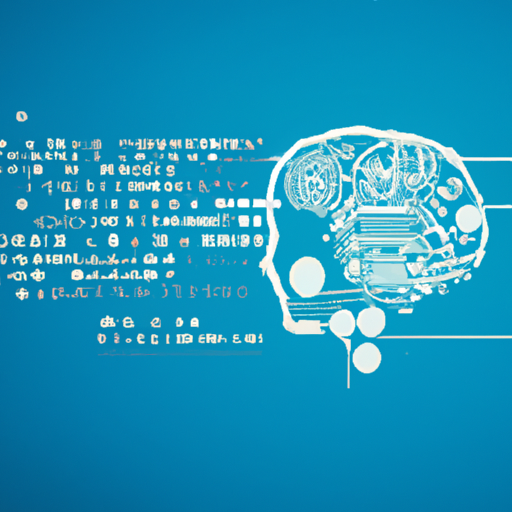Unlocking The Potential Of AI Programming With Python
Imagine a world where machines learn from experience, adapt to new inputs, and perform human-like tasks. This is the power of AI programming with Python. In this article, we’ll take you on a journey through the various aspects of AI programming using Python, showcasing how it can revolutionize both personal projects and professional endeavors.
Why Choose Python For AI Programming?
Python is often hailed as the go-to language for AI programming. But why is that?
First and foremost, Python’s simplicity and readability make it an excellent choice for newcomers and experienced developers alike. Its syntax is clean and easy to understand, reducing the cognitive load on programmers.
In addition to its simplicity, Python boasts a robust ecosystem of libraries and frameworks specifically designed for AI. Libraries like TensorFlow, Keras, and PyTorch offer pre-built modules that simplify complex tasks such as neural network implementation.
Moreover, the Python community is vast and active. This means you’re never alone in your journey; forums, tutorials, and documentation abound to help you overcome any hurdles.
Real-World Applications Of AI Programming With Python
The versatility of AI programming with Python extends across numerous domains:
– Healthcare: Predictive models can diagnose diseases from medical images.
– Finance: Algorithmic trading systems use machine learning to make profitable trades.
– E-commerce: Recommendation systems personalize shopping experiences for users.
These examples illustrate how mastering AI programming with Python can open doors to exciting career opportunities in various industries.
Setting Up Your Environment For Success
Before diving into coding, setting up your development environment correctly is crucial. Here’s a step-by-step guide:
1. Install Python: Download the latest version from the official website.
2. Set Up A Virtual Environment: Use `virtualenv` or `conda` to create isolated environments for different projects.
3. Install Essential Libraries: Use `pip` to install libraries like NumPy, pandas, scikit-learn, TensorFlow, Keras, and PyTorch.
4. IDE Selection: Choose an Integrated Development Environment (IDE) such as PyCharm or Jupyter Notebook for efficient coding and debugging.
With this setup in place, you’re ready to embark on your AI programming journey.
Learning Resources And Courses
To get started with AI programming with Python:
– Enroll in online courses like Coursera’s “Introduction To Artificial Intelligence“.
– Explore cloud computing courses that offer hands-on experience with powerful computational resources.
– Consider full stack developer programs that cover everything from front-end development to back-end data processing.
These resources provide a strong foundation in both theory and practical application.
Diving Into Basic Machine Learning Concepts
Understanding basic machine learning concepts is vital before tackling complex problems:
1. Supervised Learning: Algorithms learn from labeled data; examples include linear regression and decision trees.
2. Unsupervised Learning: Algorithms identify patterns without labeled data; examples include k-means clustering.
3. Reinforcement Learning: Algorithms learn by interacting with an environment; used extensively in robotics and game development.
By grasping these concepts early on, you’ll have a solid foundation upon which more advanced topics can be built.
Building Your First Machine Learning Model
Let’s walk through building a simple machine learning model using scikit-learn:
“`Python
# Import necessary libraries
Import numpy as np
From sklearn.Model_selection import train_test_split
From sklearn.Linear_model import LinearRegression
# Generate synthetic data
X = np.Random.Rand(1000).Reshape(-1, 1)
Y = 3 * X.Squeeze() + 4 + np.Random.Randn(1000)
# Split data into training and testing sets
X_train, X_test, y_train, y_test = train_test_split(X,y,test_size=0.2)
# Initialize model
Model = LinearRegression()
# Train model
Model.Fit(X_train,y_train)
# Evaluate model
Score = model.Score(X_test,y_test)
Print(f’Model Accuracy: {score}’)
“`
This simple example illustrates how quickly you can build effective models using Python’s rich library ecosystem.
Tackling Advanced Topics In AI Programming With Python
Once comfortable with basic concepts:
Explore deep learning frameworks like TensorFlow or PyTorch:
These allow you to build complex neural networks capable of tasks such as image recognition or natural language processing (NLP).
Consider specializing in niche areas like reinforcement learning:
If fascinated by robotics or autonomous agents interactively improving their behavior over time.
Investigate big data solutions:
Combining AI programming skills with big data technologies opens up new possibilities for handling massive datasets efficiently—essential for industries dealing with vast amounts of information daily.
The Future Of AI Programming With Python
As technology continues evolving at breakneck speed:
AI will play an increasingly prominent role across all sectors—from healthcare innovations improving patient outcomes through predictive analytics—to financial markets leveraging algorithmic trading strategies driven by sophisticated ML models—to e-commerce platforms revolutionizing customer experiences via personalized recommendations powered by advanced NLP techniques!
Embracing these advancements today ensures staying ahead tomorrow—positioning yourself at forefront cutting-edge developments shaping future industries worldwide!
So what are waiting? Dive right into world endless possibilities offered Ai Programming With python now start creating next-gen solutions transforming lives around us forever!

